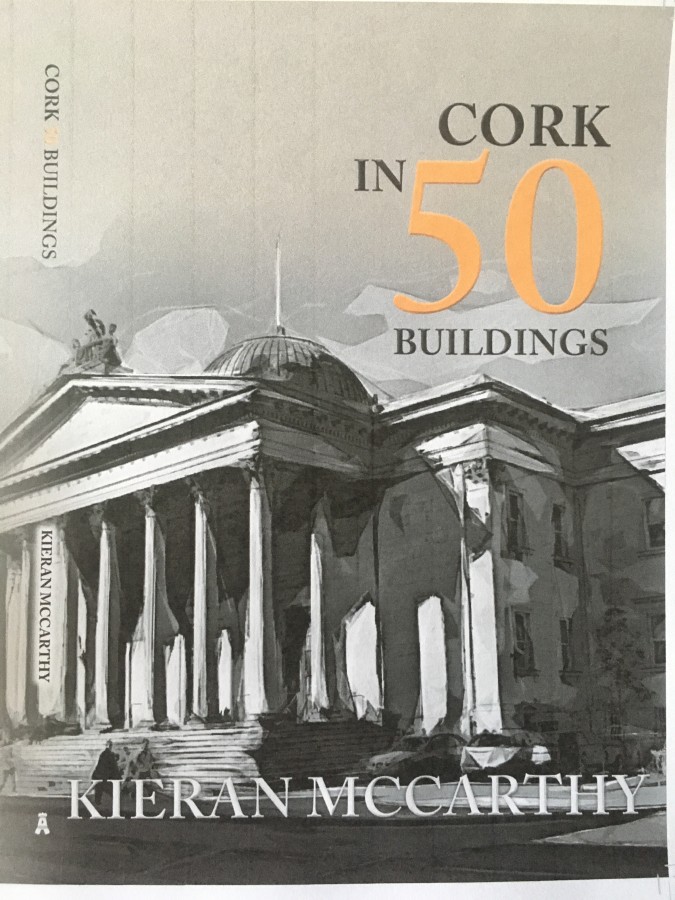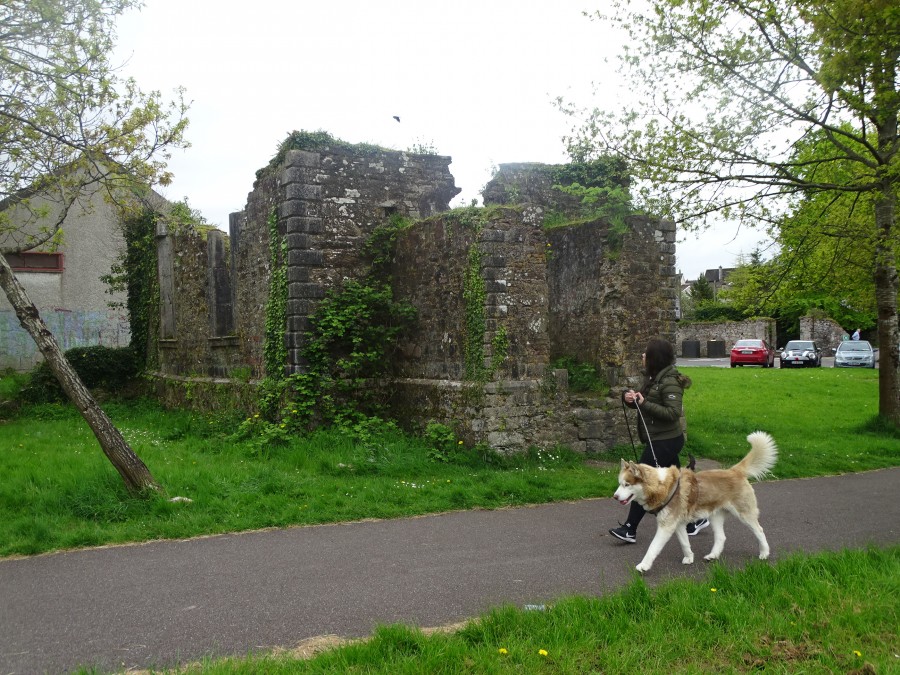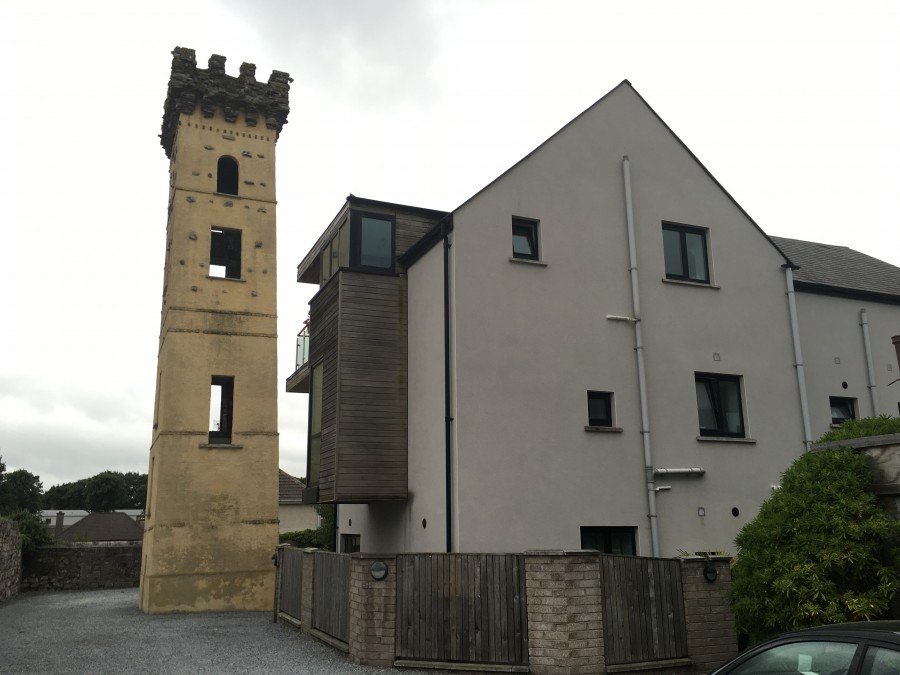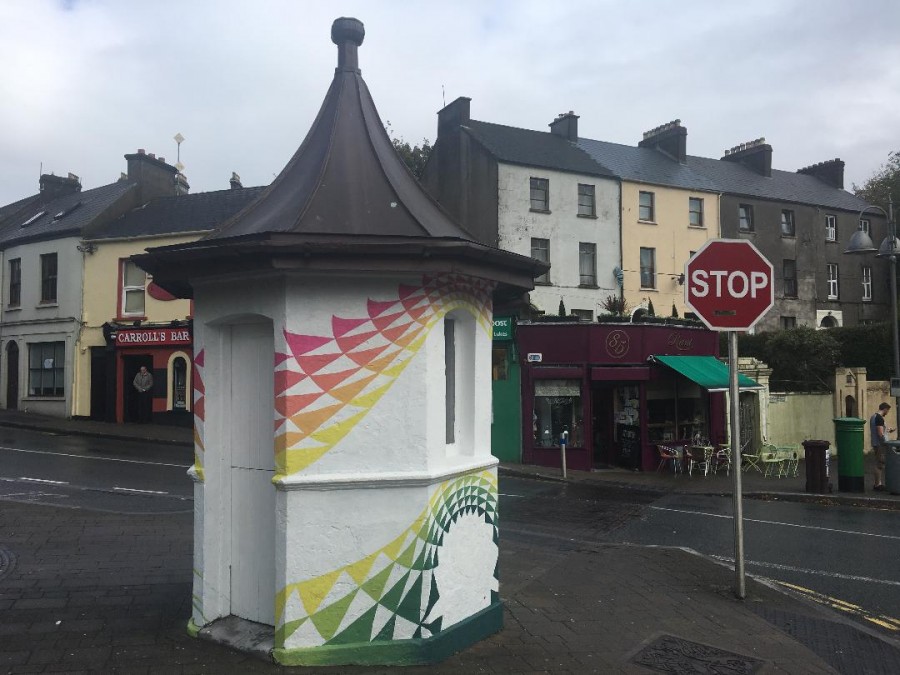Kieran’s Our City, Our Town Article,
Cork Independent, 29 November 2018
Cork in 50 Buildings
My new book for 2018 is entitled Cork in 50 Buildings (Amberley Publishing). It explores the history of this venerable old city through a selection of its greatest architectural treasures, from the St Anne’s Church, Shandon, regarded as a symbol of the city, to more recent additions such as the tower of the County Hall, once the tallest building in Ireland. This book offers a glimpse to explore behind fifty of Cork’s historic buildings. Below I outline some of my favourite buildings in order to plug the book!
Building #6 The Bishop’s Church
Protestant Bishop of Cork Peter Browne occupied the See of Cork and Ross, 1710-1735, and lived in a house he personally financed in the south west countryside of Cork City. Bishop Browne was buried in a chapel adjacent his mansion on his estate. The little chapel still exists in the heart of Bishopstown. There was a belfry on its eastern side, now gone. The western side also had a small porch ascended by a semi-circular flight of five steps of cut limestone. In the centre of the Court-yard was the Crown and Mitre set in the pavement with a yellow-coloured stone.
Building #8 The Butter Market
In 1849, an elaborate Roman temple style portico was added to the front of the butter market and this was designed by Sir John Benson. In the late 1800s, there was a distinct decline in the economic fortunes of the city. The profits of the export provision trade of agricultural products such as butter and beef declined. In 1858, 428,000 firkins of butter were been exported per annum and by 1891, this was reduced to 170,000 firkins.
Building #18 The Distillery
The house at the junction of the North Mall and Wise’s Hill was the residence of the distiller Francis Wise, after whose family the hill is named. The detached five-bay three-storey former house, built c. 1800, is now in use as a university building. The building retains interesting features and materials, such as the timber sliding sash windows, wrought-iron lamp bracket arch, and interior fittings. In the 1870s Francis Wise of Cork owned 9,912 acres in county Cork and 9,636 acres in county Kerry.
Building #33 The Pepperpot Tower
St Anne’s Church Shandon was built in 1722 with a distinctive tall tower. It was only in 1752 that its famous bells were installed. Indeed, their fame is worldwide especially with the immortal words of Fr Prout’s poem “The Bells of Shandon” echoing behind their history. Fr Prout was the pen name for Fr Francis Mahony who spent many years of his childhood living nearby, listening to the bells in the early half of the nineteenth century.
Building #34 The Philanthropic Spirit
The Cork Improved Dwellings Company also built housing in the city. This was a group, which favoured the idea of British philanthropic industrialists building workers’ housing. Established in 1860 through a shareholding idiom, one could speculate and invest, and get a return whilst at the same time providing an escape for many impoverished families from slum ridden areas of the city. The company eventually built almost 420 houses – Prosperity Square & surrounds, Rathmore Terrace on St Patrick’s Hill and Hibernian Buildings on Albert Road became their flagship projects.
Building #39 The Roman Catholic Cathedral
The present Cathedral of St Mary’s and St Anne’s is the fifth church on the site since the early 1600s (1624, 1700, 1730, and 1808). The story of the present-day structure is as follows. In 1820, an immense fire greatly damaged the fourth cathedral so much so that it was really the skeleton structure of the burned cathedral that survived. However, all was not lost and shortly after, the bishop of that time, John Murphy delegated to architect, George Pain, the rebuilding of the then 12-year-old cathedral, inside and outside. George Pain was also responsible for the design of buildings such as Holy Trinity Church, St. Patrick’s Church and Blackrock Castle.
Building #42 The Shopping Arcade
The beautiful Winthrop Arcade opened in March 1926. It connects Winthrop Street and Oliver Plunkett Street by a glass covered way and consists of twelve shops. It was the first Arcade constructed in the Irish Free State.
Building #45 The Toll Booth
The old St Luke’s Toll Booth is a beautiful freestanding octagonal-plan structure, built c.1880 and is the last reference to an ancient system of paying tolls in the city. The toll booths were owned by the Corporation of Cork and leased out to the highest bidder. In the late twentieth century, the highest bidder for the St Luke’s Booth was Mr Michael Hennessy. His father ran a newspaper business from the tiny building with the family having a nearby news agents shop there for several years.
Building #47 The Viewing Tower
The idea for Callanan’s Tower was inspired by the Crystal Palace Exhibition in London, which Michael Callanan visited in 1851. A high limestone tower would be the central point of Callanan’s proposal. The estimated cost of the scheme was £50,000. Ornamental gardens were designed, and the tall tower was constructed approximately, 25 to 30 metres in height, which assumed the shape of a medieval tall castle.
Kieran’s new book, Cork in Fifty Buildings (2018, Amberley Publishing) is now available in Cork bookshops.
Kieran is also showcasing some of the older column series on the River Lee on his heritage facebook page at the moment, Cork Our City, Our Town.
Captions:
974a. Ruined Bishop’s Church, Bishopstown present day (picture: Kieran McCarthy)
974b. Callanan’s Tower, present day (picture: Kieran McCarthy)
974c. Toll booth, St Luke’s Cross, Present Day (picture: Kieran McCarthy)
974d. Front cover of Cork in 50 Buildings by Kieran McCarthy



